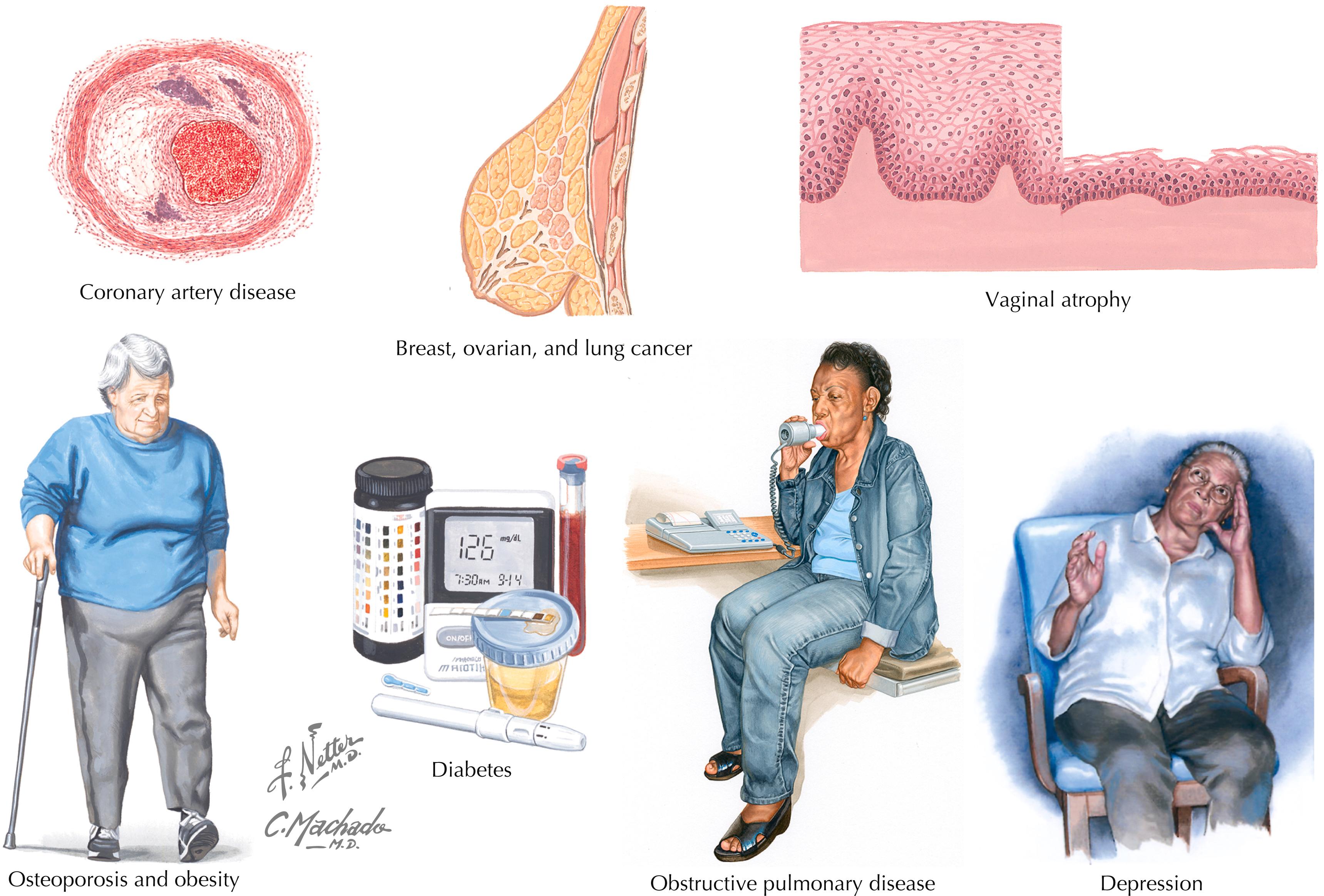Physical Address
304 North Cardinal St.
Dorchester Center, MA 02124
This age group is notable for transitions from reproductive function to maturity, from rhythmic menstrual function to menopause, and from robust health to the emergence of age-related changes.
Breast, lung, colorectal, and ovarian cancer
Coronary artery disease
Accidents/unintentional injury
Diabetes mellitus and its complications
Cerebrovascular disease
Obstructive pulmonary disease
Nose, throat, and upper respiratory tract conditions
Osteoporosis
Arthritis
Hypertension
Depression
Orthopedic deformities, including back and upper and lower extremities
Obesity
Heart disease
Hearing and vision impairments
Reason for visit
Health status: Medical, surgical, family
Dietary/nutritional assessment
Physical activity
Tobacco, vaping, alcohol, and other drugs (including complementary and alternative medicines)
Abuse/neglect
Sexual practices/contraception
Urinary and fecal incontinence (These issues become more common with childbearing and age, but patients seldom volunteer these complaints.)
Height
Weight (body mass index [BMI])
Blood pressure
Oral cavity
Neck: adenopathy, thyroid palpation
Breasts
Abdomen
Pelvic and rectovaginal examination
Skin screening
Periodic
Primary human papillomavirus (HPV) testing every 5 years from ages 30–50 years, regardless of triaging strategy. Studies show that this results in the largest reductions in cervical cancer incidence and mortality rates, with >50% reduction in cervical cancer incidence and >55% reduction in cervical cancer mortality. Cervical cytology alone every 3 years, or cotesting with a combination of cytology and high-risk HPV testing every 5 years is also acceptable for those at low risk between the ages of 30 and 65 years. Cholesterol, high-density lipoprotein cholesterol (every 5 years, starting at the age of 45 years)

Fecal DNA testing (A single stool sample collected at the time of digital rectal examination is not sufficient to adequately screen for colon cancer.)
Sigmoidoscopy (every 3–5 years after the age of 45 years; double-contrast barium enema study may be substituted, or a complete colonoscopy may be performed every 10 years)
As indicated by risk factors
Bacteriuria testing
Colonoscopy
Fasting glucose test
Hemoglobin
Human immunodeficiency virus (HIV) testing
Lipid profile
Mammography
Sexually transmitted disease testing
Thyroid-stimulating hormone test
Tuberculosis skin test
Become a Clinical Tree membership for Full access and enjoy Unlimited articles
If you are a member. Log in here